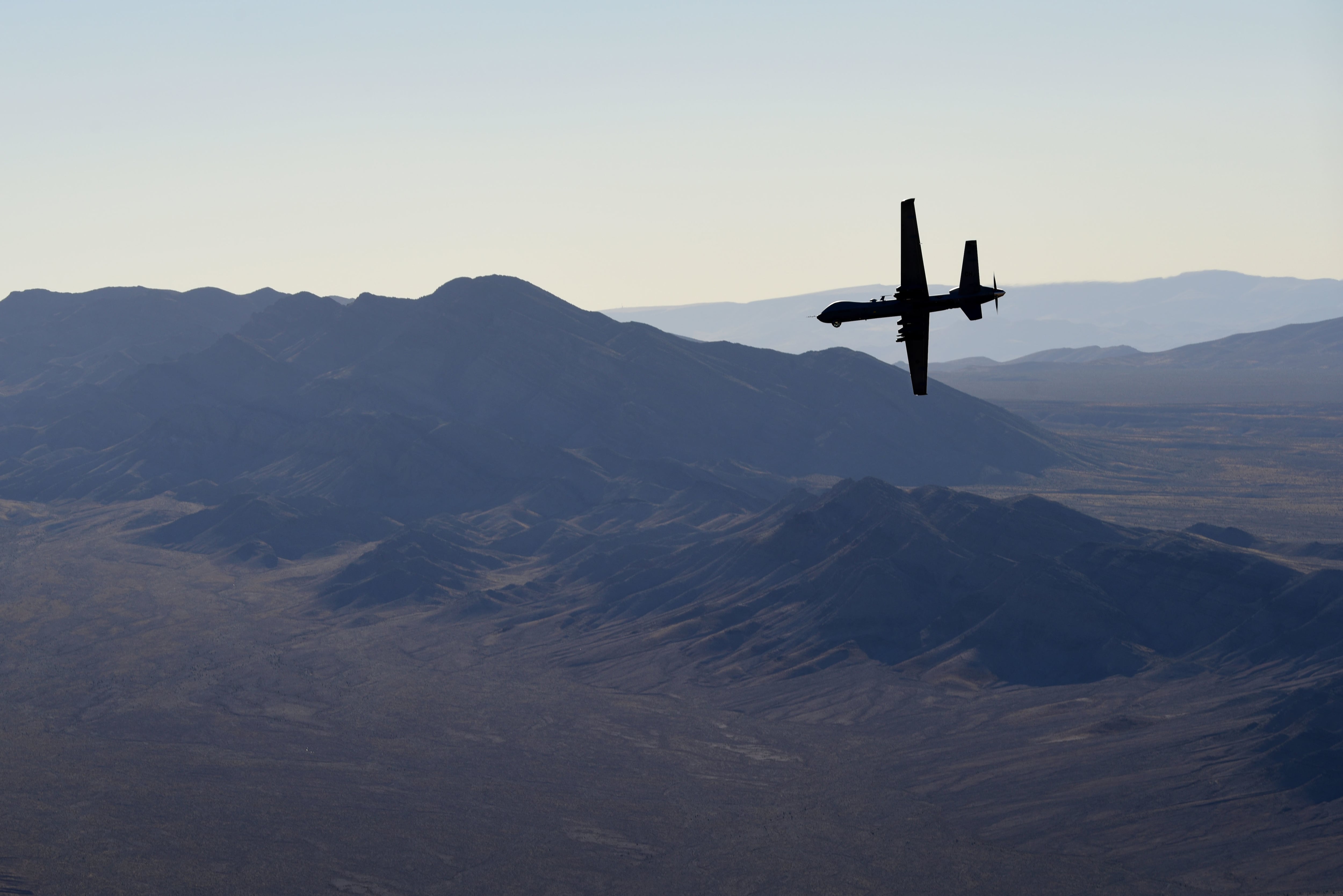The Marine Corps completed its first test flight Tuesday of a robotic aircraft that could get downed in battle without taking a big chunk out of the service’s budget.
The service received the first of two XQ-58A Valkyrie drones in March as part of its efforts to develop lower-cost unmanned systems, according to a Marine news release Thursday.
The test flight Tuesday was an early step toward getting the robot aircraft ready to fly in support of Marine Corps missions.
“The aircraft performed as expected,” the Corps said, without providing additional details about the results of the flight.
Video of the flight posted by the Marine Corps on Thursday shows the uncrewed jet, which doesn’t require a runway, take off at Eglin Air Force Base on Florida’s Gulf Coast.
The Valkyrie — which clocks in at approximately $6.5 million, according to the manufacturer — could be a relatively low-cost way for the Marine Corps to build out its inventory of uncrewed aircraft. In contrast, General Atomics’ MQ-9 Reaper drone, designed for surveillance, costs approximately $38 million, according to a Pentagon budget document.
The price tag and lack of crew would make the 30-foot-long Valkyrie “attritable,” in Pentagon lingo, meaning it would be OK with the military if the aircraft were downed in combat after a few missions, according to Air Force informational materials.
RELATED

The long-range drone is highly autonomous, according to the Marine Corps. In other words, more than being simply uncrewed, the Valkyrie can be flown by artificial intelligence and requires minimal help from a human pilot.
The Valkyrie could fly in a variety of missions that crewed aircraft would otherwise complete, according to the Air Force, and could serve as a wingman to a traditional crewed aircraft.
The Marine Corps is engaged in a wide-ranging overhaul, called Force Design 2030, in an effort to prepare for conflict with a powerful, technologically capable military, especially China’s. That effort involves getting robots and drones into the hands of Marines, and training Marines to operate them.
The test flight Tuesday occurred as part of the Marine Corps’ Penetrating Affordable Autonomous Collaborative Killer – Portfolio program, according to the news release. The Corps is partnering with the Office of the Undersecretary of Defense for Research and Engineering, the Naval Air Systems Command and the Naval Air Warfare Center Aircraft Division on the Valkyrie.
In Norse mythology, a Valkyrie is a supernatural maiden who selects those to be slain in battle and taken to Valhalla, where those slain warriors reside. The manufacturer of the XQ-58A Valkyrie is the U.S. technology company Kratos, which takes its name from the personification of strength and power in Greek mythology.
The test flight Tuesday wasn’t the first overall for the Valkyrie drone. The Air Force, whose research laboratory developed the aircraft in partnership with Kratos, conducted the inaugural test flight in March 2019.
But the Corps’ test flight of the Valkyrie is a way for the service to determine what it requires from the drone, according to the news release.
The Marine Corps’ six planned test flights with the Valkyrie will evaluate aspects of the drone that include its ability to support intelligence, surveillance and reconnaissance missions and the potential for it to serve as a robotic wingman, according to the release.
Irene Loewenson is a staff reporter for Marine Corps Times. She joined Military Times as an editorial fellow in August 2022. She is a graduate of Williams College, where she was the editor-in-chief of the student newspaper.



